Archive of ‘instructional technology’ category
9 Universities to Collaborate on Digital Credentials Initiative
By Rhea Kelly 04/23/19 https://campustechnology.com/articles/2019/04/23/9-universities-to-collaborate-on-digital-credentials-initiative.aspx
he institutions involved are Delft University of Technology in the Netherlands, Harvard UniversityDivision of Continuing Education, Hasso Plattner Institute at the University of Potsdam in Germany, MIT, Tecnológico de Monterrey in Mexico, Technical University of Munich in Germany, University of California, Berkeley, University of California, Irvine and the University of Toronto in Canada.
Researchers from the universities plan to build on pioneering efforts such as MIT’s Blockcerts pilot, to create a trusted, distributed and shared infrastructure that will allow learners to:
- Maintain a verifiable record of lifelong learning achievements (including badges, internships, bootcamps, certificates, MicroMasters and stackable credentials, as well as traditional degrees);
- Receive credentials digitally and safely;
- Share credentials with employers or other institutions;
- Own their credentials forever, without having to ask or pay their institution for a transcript; and
- Compile and curate credentials received from multiple educational institutions.
“Alternative digital credentials fill an important gap between learning and work-relevant skill verification. The adoption of an ADC system will allow universities to achieve greater alignment with the demands of both students and local economies, making universities more accountable for what they produce,” commented Gary W. Matkin, dean of Continuing Education and vice provost of Career Pathways at UC Irvine. “Young adults are demanding shorter, relevant education that they can put to immediate use. Industry hiring practices will increasingly depend on digital searches for job candidates and ADCs will make those competencies easier to discover.”
“Digital credentials are like tokens of social and human capital and hold tremendous value for the individual. The crucial opportunity we have today is to bring together institutions that share a commitment to the benefit of learners, and who can act as stewards of this infrastructure,” said Philipp Schmidt, director of learning innovation at the MIT Media Lab.
“Our shared vision is one where academic achievements, and the corresponding credentials that verify them, can open up new pathways for individuals to become who they want to be in the future,” said José Escamilla, director of TecLabs Learning Reimagined at Tecnologico de Monterrey.
For more information, visit the Digital Credentials project website.
++++++++++++++++
more on microcredentialing in this IMS blog
https://blog.stcloudstate.edu/ims?s=microcredentialing
2019 Horizon Report
Tuesday, April 23, 2019 https://library.educause.edu/resources/2019/4/2019-horizon-report
https://library.educause.edu/-/media/files/library/2019/4/2019horizonreport.pdf
p. 8 Modularized and Disaggregated Degrees
Only 2% of institutions have deployed digital microcredentials (including badging) institution-wide, but 29% are expanding or planning their use. —EDUCAUSE Strategic Technologies, 2019
p. 15 Increasing Demand for Digital Learning Experience and Instructional Design Expertise
A driving factor for mobile learning is the ownership of mobile devices, particularly the smartphone. In 2018, the Pew Research Center reported that 59% of adults globally own a smartphone, and research from the EDUCAUSE Center for Analysis and Research indicated that 95% of undergraduate students own smartphones. As mobile device ownership and usage have increased, mobile learning is no longer just focused on asynchronous interaction, content creation, and reference. More emphasis is emerging on content that is responsive instead of adaptive and on creating microlearning experiences that can sync across multiple devices and give learners the flexibility to learn on the device of their choice
p. 25 Mixed Reality
p. 36 Fail or Scale: AR and MR –
In 2016, the Horizon Expert Panel determined that augmented reality and virtual reality were two to three years from widespread adoption. By 2018, the notion of mixed reality was, at four to five years from adoption, even further out.
p. 38 Bryan Alexander: Gaming and Gamification (Fail or Scale)
++++++++++++++
more on the Horizon reports in this IMS blog
https://blog.stcloudstate.edu/ims?s=horizon+report
My Note: synchronous vs asynchronous; Adobe Connect vs Zoom. Also Flipgrid for asynchronous videochats.
From: EDUCAUSE Listserv <BLEND-ONLINE@LISTSERV.EDUCAUSE.EDU> on behalf of Celine Greene <celine.greene@JHU.EDU>
Reply-To: EDUCAUSE Listserv <BLEND-ONLINE@LISTSERV.EDUCAUSE.EDU>
Date: Tuesday, April 23, 2019 at 2:38 PM
To: EDUCAUSE Listserv <BLEND-ONLINE@LISTSERV.EDUCAUSE.EDU>
Subject: [BLEND-ONLINE] Advice for Synchronous Online Classes Using Zoom Meetings?
Our school is transitioning from using Adobe Connect to using Zoom Meetings for synchronous online class sessions, of which most of our online courses schedule at least a few times each term. So after years of “controlling the user experience” with the Adobe Connect layouts and relying primarily on text chat, we are heading in the direction of screen sharing with the enhanced social and community-building experience of video “taking over” chat. Some people are very excited about this move, given the popularity and ease-of-use of the Zoom platforms. Other people are a little more wary – especially when it comes to large (e.g., 40 to 200+ students) classes.
Please share your thoughts and experiences on what faculty and students should be aware of when using Zoom Meetings (not the webinar) for a synchronous class session. Here’s some of the things I was curious about…
- Do you have a set of “instructions” or recommendations for students — e.g. so they see the chat as it happens?
- Are there any best practices in terms of meetings set-up that you recommend for your faculty? (Mute participants upon entry, always show meeting control bar, etc.)
- Have there been some scenarios that have been fantastic or some that have been horrible for using Zoom?
- Is there a class size where the number of participants starts negatively impacting the learning opportunity? (i.e., I realize Breakout rooms are an option but also not appropriate for all situations, such as having a guest speaker come in to have an interactive Q & A or having a software demonstration.)
- Are there any major “fails” you’ve learned from or, alternately, success stories?
- Are your students required to have Zoom accounts?
- Do you have a method for tracking attendance?
- …
Thanks for your input! – celine Celine Greene Instructional Technologist Center for Teaching and Learning, JHSPH http://ctl.jhsph.edu
+++++++++
more on synchronous learning environments
https://blog.stcloudstate.edu/ims?s=synchronous
Twelve Years Later: What’s Really Changed in the K-12 Sector? (Part 1)
https://www.edsurge.com/news/2019-04-03-twelve-years-later-what-s-really-changed-in-the-k-12-sector-part-1
In fall 2007, Larry Berger, CEO of Wireless Generation (now Amplify) was invited to submit a paper to an “Entrepreneurship in Education”
As education entrepreneurs know, growth in K-12 comes hard. Sometimes very hard. We were living Marc Andreessen’s startup mantra: “You only ever experience two emotions: euphoria and terror.”
The edtech boom of the past two decades promised efficacy and new instructional models. Many teachers instead experience it as “clutter.” But poorly integrated standards, curriculum, assessment, and intervention materials have always been a problem.
When it comes to instruction, the work consists of four segments: core curriculum, supplemental (intervention, test prep, little books) curriculum, assessment, and technology (hardware, infrastructure and connectivity). Each of these workstreams are run by separate teams, using independent funding streams, only rarely coordinating. Schools rely—as they always have—on the hero in the classroom, who has to somehow synthesize everything for a roomful of children, every single day.
Twelve Years Later: How the K-12 Industry and Investment Landscape Has Shifted (Part 2)
https://www.edsurge.com/news/2019-04-05-twelve-years-later-how-the-k-12-industry-and-investment-landscape-has-shifted-part-2
Twelve years ago, Amplify CEO Larry Berger and I wrote about the “pareto distribution” of companies in the K-12 sector.
The “oligopoly” was the natural outcome of a highly decentralized system and fragmented demand. To serve 15,000-plus districts and more than 100,000 school buildings, a company needed huge sales and service teams; to afford them, the company needed a bookbag full of products across content areas, grade ranges, and use cases. The structure of demand created the “Big Three”—McGraw-Hill, Houghton Mifflin Harcourt and Pearson.
Meanwhile, the number of small players—further right on the pareto distribution—has grown dramatically. Online distribution and freemium business models have enabled companies like Flocabulary, Newsela, Nearpod, and others
few alternative models to consider:
companies like Remind, ClassDojo, and Edmodo, who all adopted a “West Coast” approach: collect active users now, with plans to monetize later.
The second includes the “platform” players—Schoology, itslearning, Canvas, and other LMS-like platforms. They have set out to do something differently, only possible by means of technology—to be the search, storage and distribution platform for instructional content. Google Classroom has instead emerged as the de facto standard platform, fueled by the runaway adoption of Chromebooks.
The third includes “policy responsive” players—companies like Panorama, Ellevation or Wireless Generation. hese companies help school systems meet a new policy requirement—social-emotional learning, English Language Learning, and reading assessment, respectively.

But we’re not “decluttering” our classrooms or in our schools. What would it take for the private and public sectors to work shoulder-to-shoulder?
a catch-22: so long as buying is fragmented, it’s hard to justify the integrated product investment; so long as products are fragmented, it’s hard for a district to create an integrated instructional model.
With Bug-in-Ear Coaching, Teachers Get Feedback on the Fly
https://www.edweek.org/ew/articles/2019/02/27/with-bug-in-ear-coaching-teachers-get-feedback-on.html/
The practice is called bug-in-ear coaching, and it has been around for decades in different sectors in some capacity. But in recent years, more and more educators are beginning to try it out.
And a growing body of research shows it works. When educators are coached with this technology, they use evidence-based practices in their instruction more frequently. Research also shows that most teachers tend to keep up the improvements in their teaching behavior after the bug-in-ear coaching sessions have ended.
Yet experts say there’s skepticism from some in the education community, who worry that real-time feedback while teachers are delivering instruction will be overwhelming.
Virtual teacher-coaching services have become more popular in recent years—teachers record their lessons, and remote coaches review the videos and offer feedback. This approach has been especially popular in rural schools, or in districts that can’t afford to staff their own coaches.
As educators see the benefits of the coaching method, experts predict that it will continue to spread. That has been the case at the University of Washington’s college of education, where researchers have done a series of studies with bug-in-ear coaching.
Ithaka S+R US Faculty Survey 2018
Table 1

Table 2

Table 3

Table 4

Table 5

Table 6

Table 7
Figure 29: Are your research publications and/or products freely available online through your institution’s repository, a disciplinary repository (such as arXiv, SSRN, etc.), or available elsewhere online (such as your personal webpage)? For each type(s) of scholarly work(s) listed below, please select all hosting sources that apply. Of the respondents that make each of the following types of publications and/or products freely available online, the percent who indicated their research is hosted in each of the following.

Table 8
Which of the following statements best describes your role in deciding what textbooks and other course materials will be used in the courses you teach? Percent of respondents who selected each item.
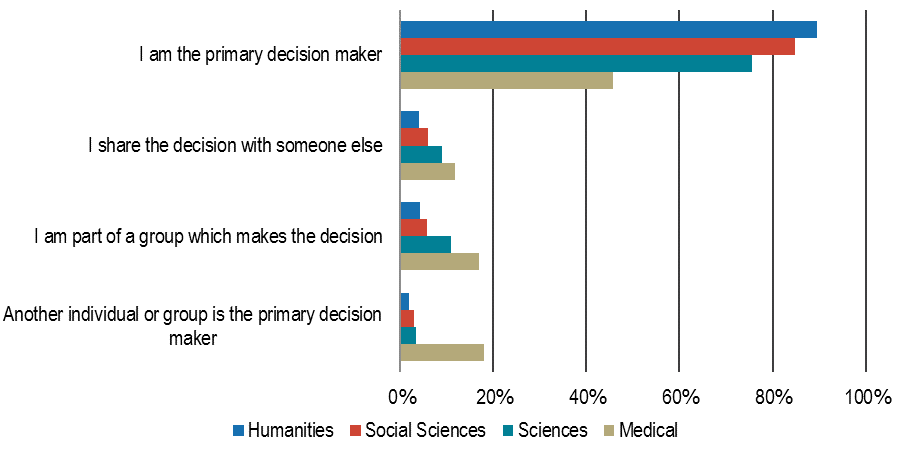
Table 9
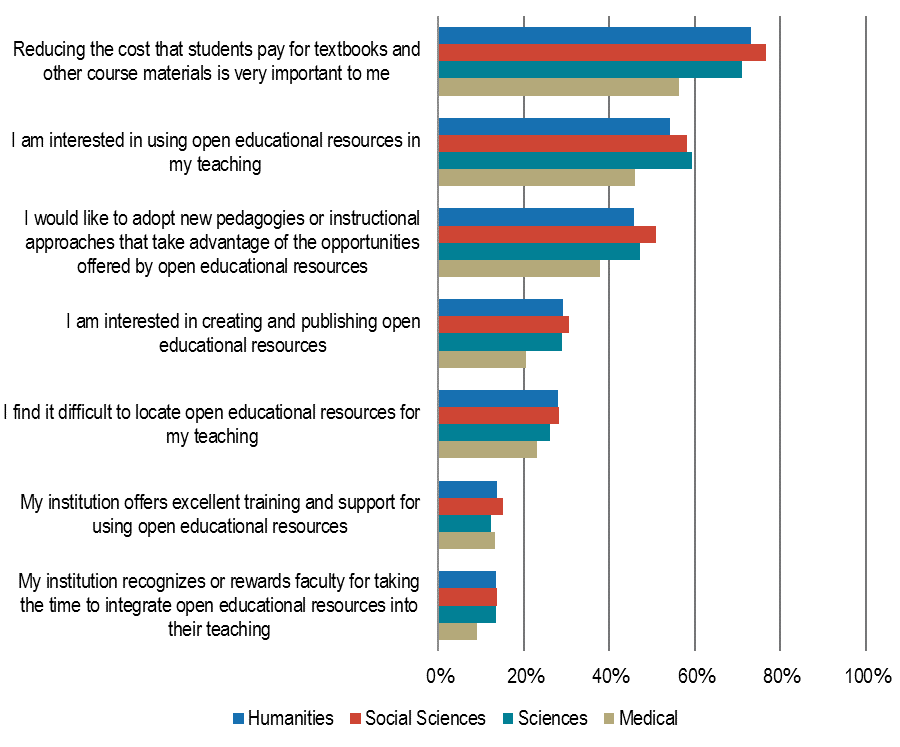
Table 10
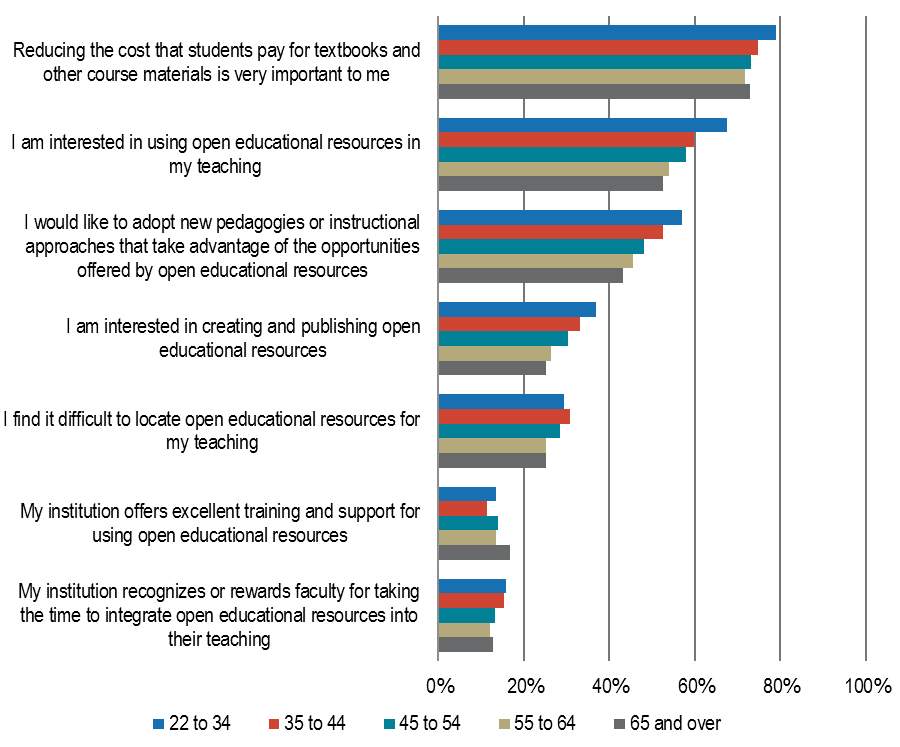
Table 11
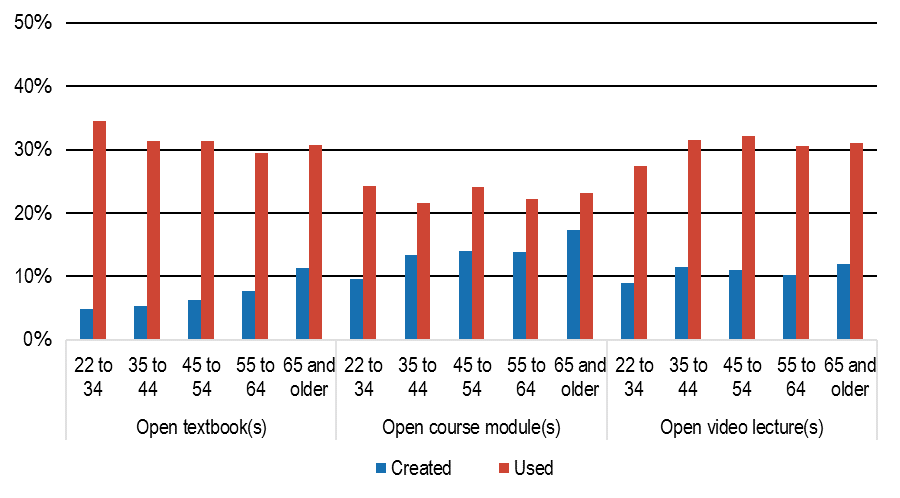
Learning Analytics Tools
Table 12
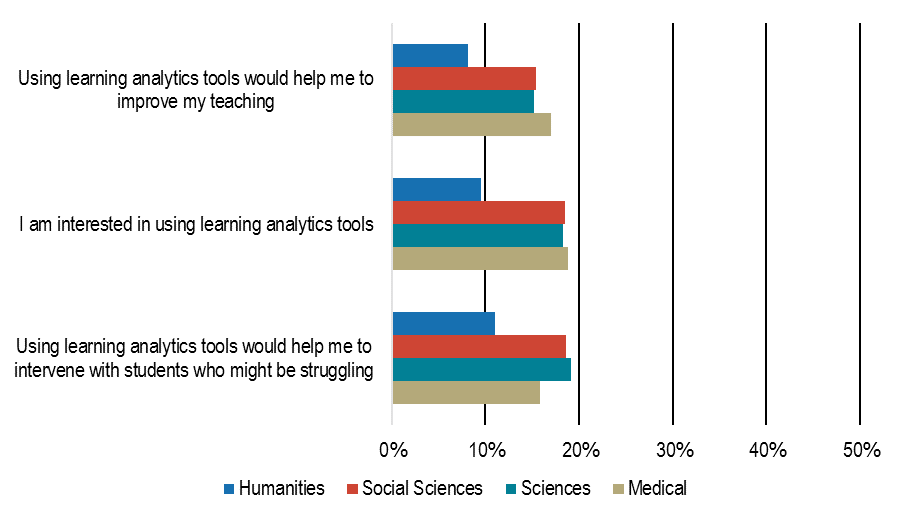
table 13
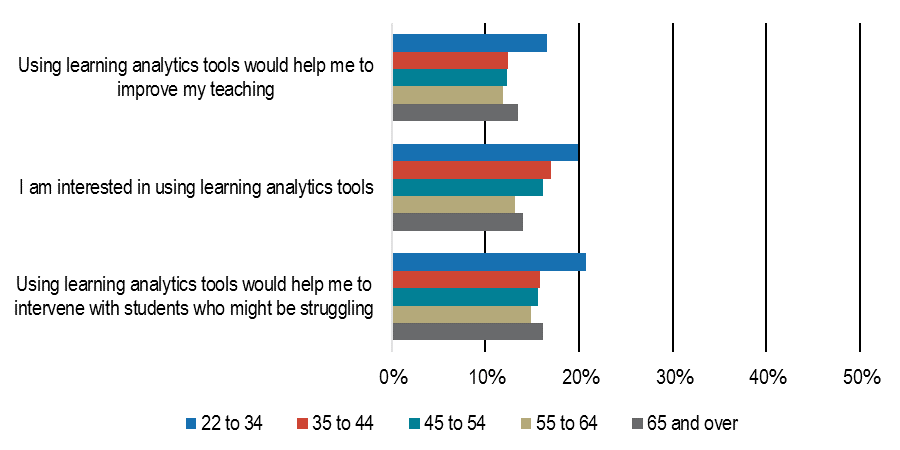
table 14
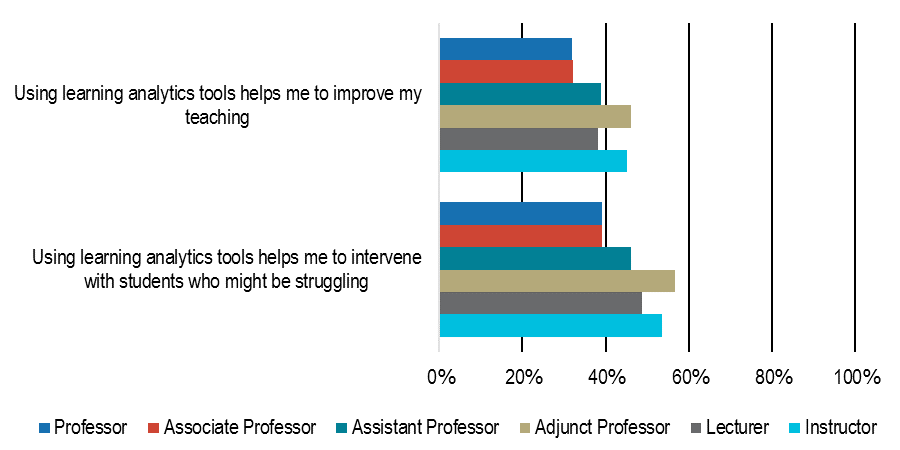
table 15
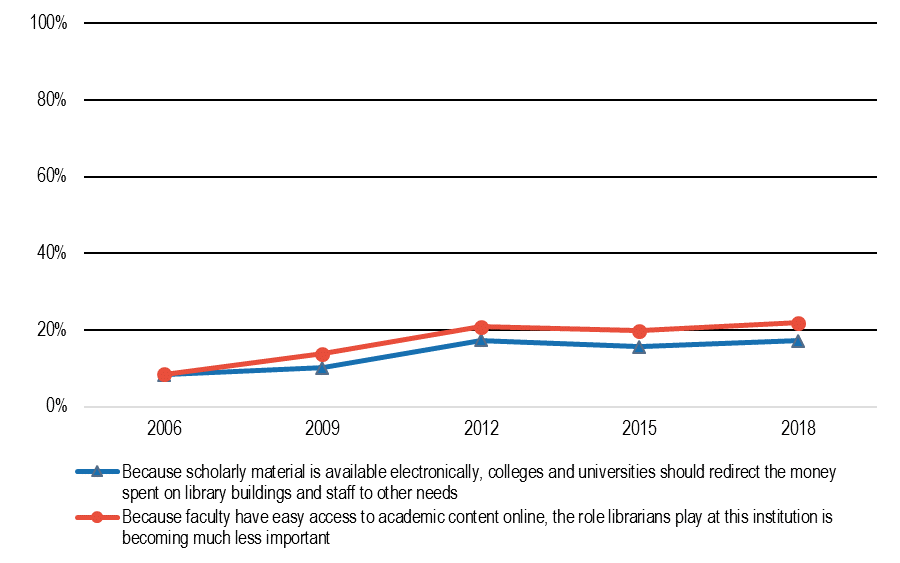
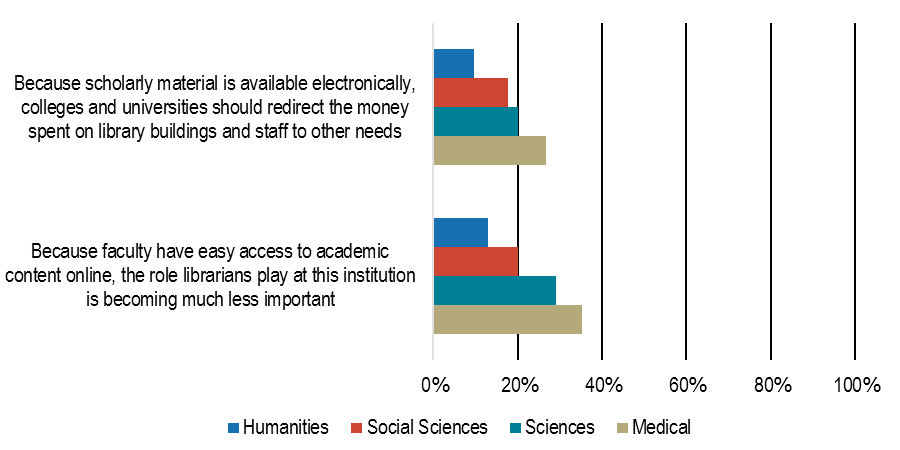
https://flipgrid.com/1ddcead2
https://twitter.com/search?q=%23ARVRinEDU&src=typd
++++++++++++++++++++
More on haptic in this IMS blog
https://blog.stcloudstate.edu/ims?s=haptic
4th Annual Shark Tank Open
Reception:
The #VR #VirtualReality sessions:
2019 Shark Tank Open program
Follow Along With a Grad Seminar About Edtech: Part 1, Picking the Best Tech
https://www.edsurge.com/news/2019-03-12-follow-along-with-a-grad-seminar-about-edtech-part-1-picking-the-best-tech
a tech catalog for students to explore and choose from, partially based on Georgetown’s enterprise suite, including a learning management system (Canvas), blogging (WordPress or other), student-run web domains, web annotation (Hypothesis) https://web.hypothes.is/, collaborative writing (Google Suite), discussion boards (Discourse), and videoconferencing (Zoom).
Neil Selwyn’s excellent Education and Technology: Key Issues and Debates.
++++++++++++++++++++++++++++
How Can Digital Audio Enhance Teaching and Learning?
https://www.edsurge.com/news/2019-03-28-grad-seminar-on-edtech-part-2-how-can-digital-audio-enhance-teaching-and-learning
Before there were podcasts, there was pirate radio, rogue broadcasters flinging unusual sounds over borders and adding new music to cultures. And before that there was the “theater of the mind,” harnessing radio’s deep power to inspire listeners’ imaginations.
Then we advanced to podcasting’s second wave—the one we’re enjoying now—the one sparked by Serial’s massive success in 2014. When you consider audiobooks in the mix, it’s clear how varied and mainstream portable digital audio is today.
+++++++++++++++++++
https://www.edsurge.com/news/2019-04-18-video-assignments-are-the-new-term-paper-how-does-that-change-teaching-and-learning
Digital video has taken the world by storm. Netflix is busy changing television and movies. YouTube may be humanity’s largest collaborative cultural project, aggregating an astonishing amount of user-generated content. The Google-owned service is widely used that it may already soak up more than a third of all mobile traffic.
Unsurprisingly, we increasingly learn from digital video. The realm of informal learning is well represented on YouTube—from DIY instruction to guerrilla recordings of public speakers. Traditional colleges now rely on digital video, too, as campuses have established official channels and faculty regularly turn to YouTube for content. And new kinds of educational institutions have emerged, like the nonprofit Khan Academy,
We also explored the rise of teaching via live video. More colleges are using it for online learning, since it can make students and instructors more present to each other than most other media. We also saw videoconferencing’s usefulness in connecting students and faculty when separated by travel, illness or scheduling challenges.
Our readings—Zac Woolfitt’s “The effective use of video in higher education,” and Michelle Kosalka’s “Using Synchronous Tools to Build Community in the Asynchronous Online Classroom”—and discussion identified a range of limitations to video’s utility. Videoconferencing requires robust internet connection that not all students have access to, and even downloading video clips can be challenging on some connections. People are not always comfortable appearing on camera. And some content is not well suited to video, such as mostly audio conversations or still images.
















